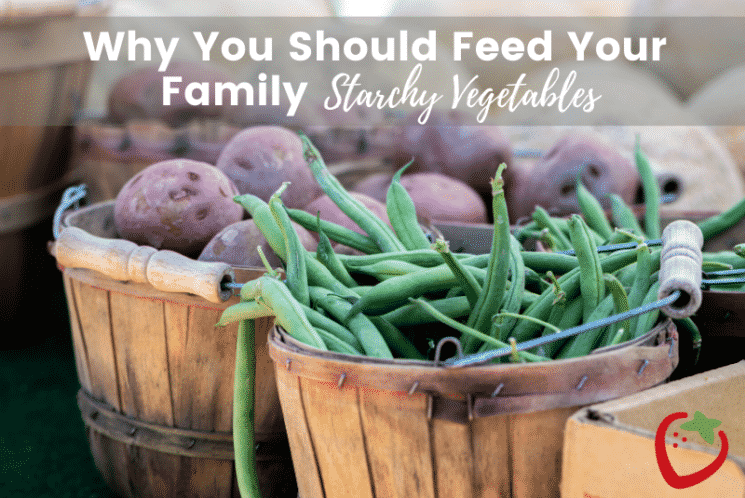Why You Should Feed Your Family Starchy Vegetables
Some nutrition experts recommend choosing “non-starchy” vegetables instead of “starchy vegetables” for optimal health. See why I believe both kinds of veggies are important for kids.

Have you ever heard of “starchy” and “non-starchy” vegetables? If you have, you might be confused about these two categories, and what they mean for your health.
To make things even more confusing, some nutrition experts recommend AGAINST eating starchy vegetables, arguing that non-starchy vegetables provide a higher concentration of vitamins and minerals.
Read on to learn how these two kinds of veggies are different–and how they’re similar. And find out why I believe BOTH kinds of veggies belong in your kids’ diet (and your own!)
What Are Starchy and Non-Starchy Vegetables?
Vegetables are labeled “starchy” when they contain more carbohydrates and more calories compared to other (“non-starchy”) vegetables. Here’s a list of common vegetables in the “starchy” category: corn, peas, potatoes, zucchini, parsnips, pumpkin, butternut squash and acorn squash.
The non-starchy vegetables category is much larger and includes veggies like spinach, celery, broccoli, radishes, onions, garlic, tomatoes, cucumbers, carrots and beets.
Non-starchy vegetables deliver a powerful punch of vitamins, minerals and phyto-nutrients. Many veggies in this class (like broccoli, onions and tomatoes) provide a wealth of benefits ranging from cancer prevention to taming inflammation to improving cholesterol. Because of these clear benefits, health advice regarding non-starchy veggies is nearly unanimous: eat more!
But what about starchy veggies? You might have heard that they aren’t nutritious and you should skip them. Or that you should focus on serving your kids non-starchy veggies. So what’s the deal… are starchy vegetables bad for you?
In a word, no!
Why You Should Eat Starchy Veggies
If you feel like you need to limit your intake of starchy vegetables because of the words “high-carbohydrate” and “high-calorie,” consider two ways that these underdog veggies can improve your family’s health—one of which is unique to starchy vegetables.
First of all, starchy vegetables are still rich in vitamins and minerals (even if they might not shine as brightly as kale).
A serving of green peas contains more vitamin A than you need in a single day, almost half your vitamin C and a fifth of your daily iron. Butternut squash and pumpkins contain beta carotene that help preserve the health of your bones, skin, eyes and immune system. And all starchy veggies contain a good dose of fiber.
Secondly, the carbohydrates and calories in starchy vegetables help your family feel full after a meal. (Try feeling full eating nothing but spinach. It’s hard!)
Feeling satisfied really matters to your family’s physical and emotional health. And it keeps kids from begging you for snacks all day!
The bottom line is that both kinds of vegetables contribute something important to your overall health; in fact, even the American Diabetes Association gives the green light to starchy vegetables for those who need to tightly manage their glucose levels. So go ahead and enjoy those veggies in abundance. To your health!
Learn More Healthy Feeding Strategies
- 10 Ways to Push Veggies Without Being Pushy
- Picky Eater Help: How to Expand and Diversify Your Kids’ Diet


Natalie Monson
I'm a registered dietitian, mom of 4, avid lover of food and strong promoter of healthy habits. Here you will find lots of delicious recipes full of fruits and veggies, tips for getting your kids to eat better and become intuitive eaters and lots of resources for feeding your family.
Learn More about Natalie
great post thanks for share
I greatly appreciate your kind word.